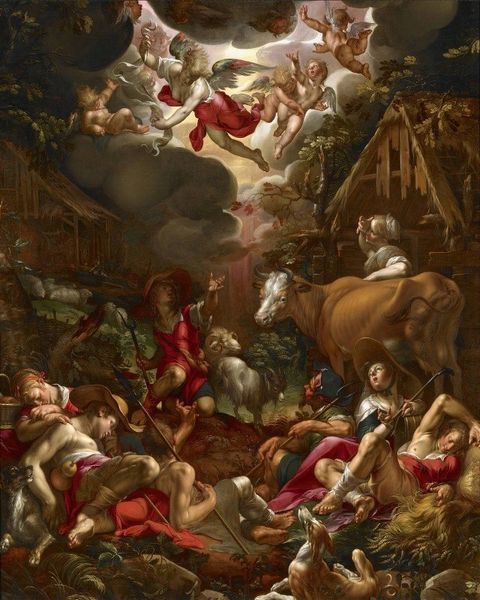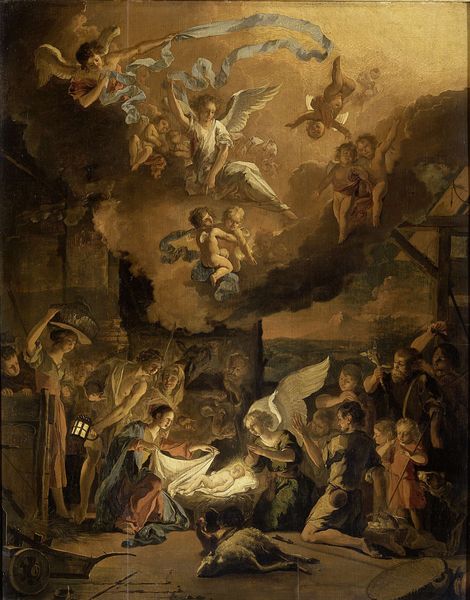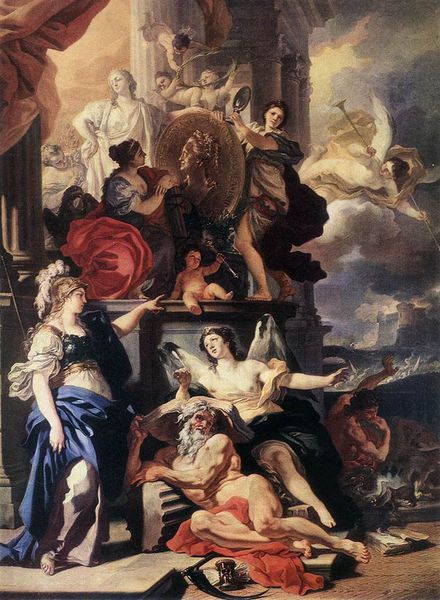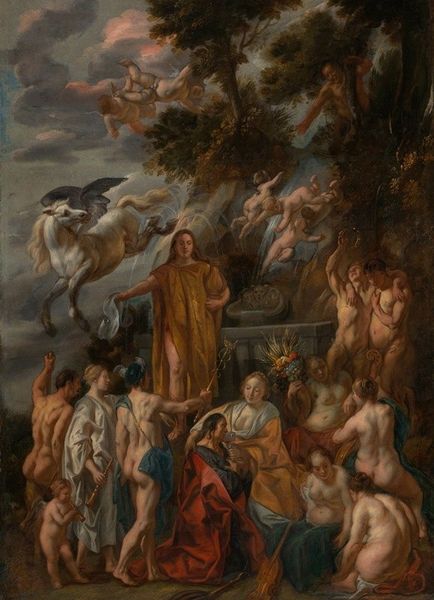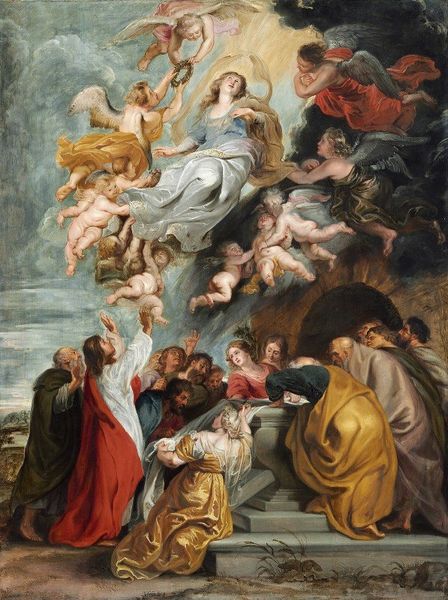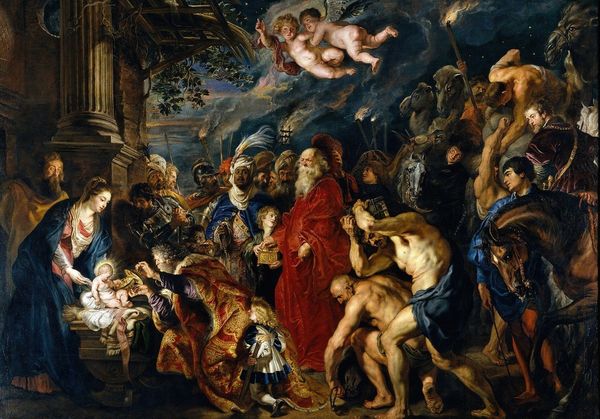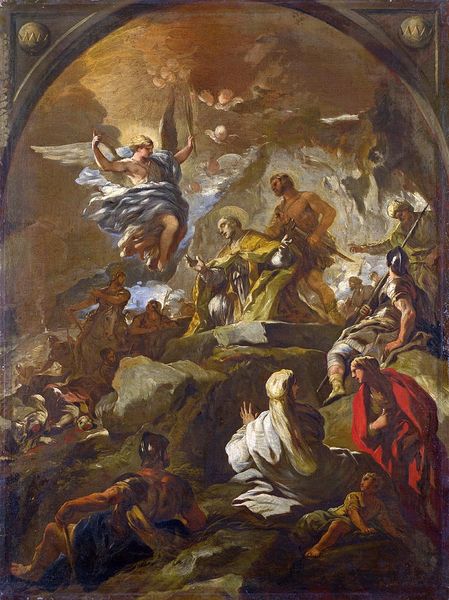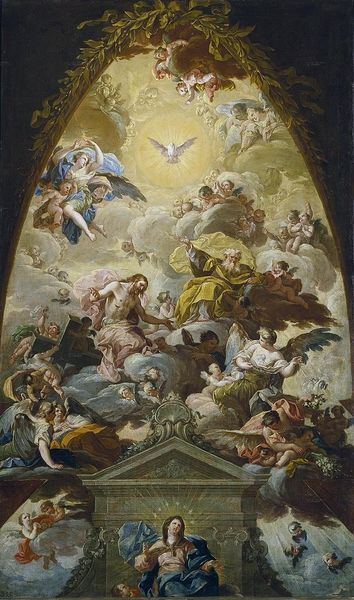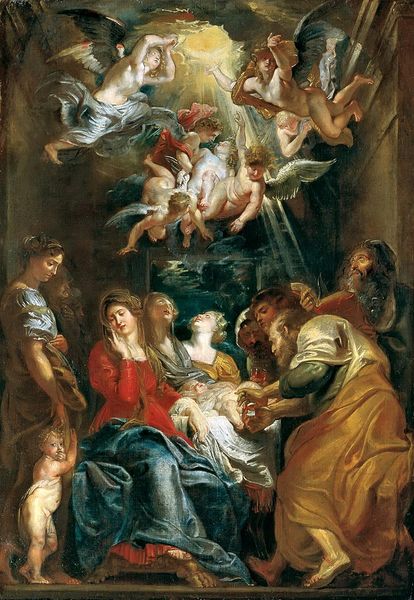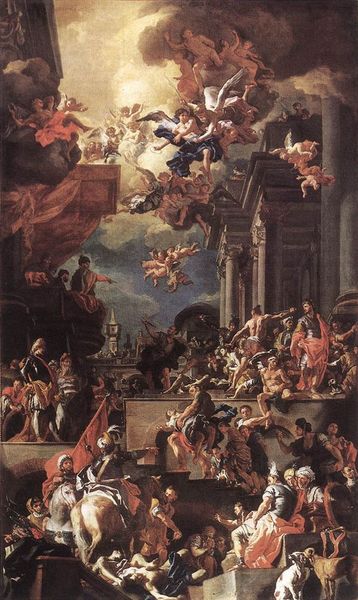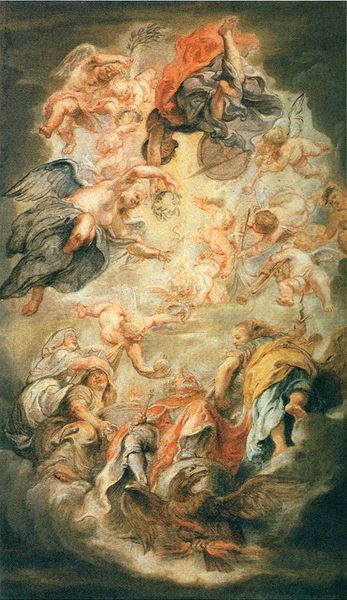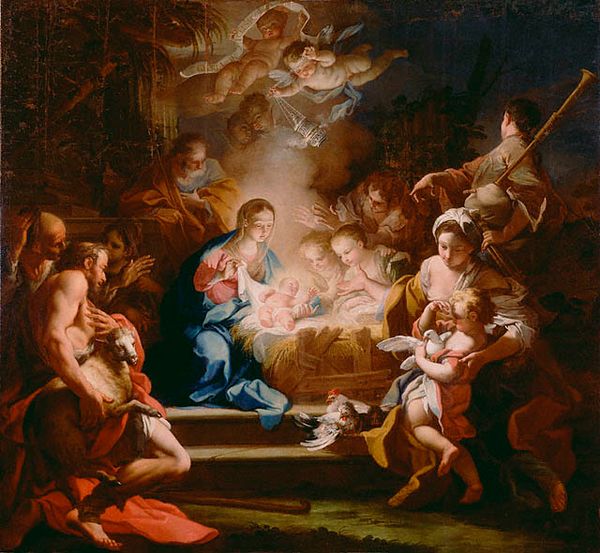
painting, oil-paint
#
allegory
#
baroque
#
painting
#
oil-paint
#
landscape
#
figuration
#
oil painting
#
history-painting
#
italian-renaissance
Dimensions: 170 x 136 cm
Copyright: Public domain
Editor: Here we have "The Announcement to the Shepherds" painted by Joachim Wtewael in 1603, using oil on canvas. It's teeming with figures and a hazy glow. What strikes me most is the juxtaposition of the divine with the earthly—how do you interpret this scene? Curator: I see here a carefully constructed display of materiality that challenges established hierarchies. Wtewael is using expensive oil paints – pigment sourced globally – to depict working-class shepherds. It's a theatrical performance of piety built upon very real economic structures. Notice how much detail goes into the rendering of their coarse clothing, their weathered skin? This level of detail wouldn't be possible without access to and mastery of precious materials. Editor: So, the painting itself becomes a commentary on the economic disparities of the time? Curator: Precisely! It's not simply about faith; it's about the means through which faith is represented. The shepherd's labor literally provides the economic stability allowing for Wtewael's production. Think of it as painting labor. Can we ignore labor to find God, or are these intertwined here? Editor: That's a fascinating point. It really changes the way I view these figures – as more than just recipients of divine grace. Curator: Consider how the rise of capitalism in the Netherlands is intertwined with both global trade and religion. Art in its materiality becomes the evidence. What story does the painting actually want us to see, ignoring the literal religious narrative? Editor: Thinking about it this way reveals layers I hadn't considered before, this relationship of labor, faith, and material reality really makes one think. Curator: Exactly! Material analysis illuminates the societal underpinnings of even seemingly spiritual scenes.
Comments
No comments
Be the first to comment and join the conversation on the ultimate creative platform.
